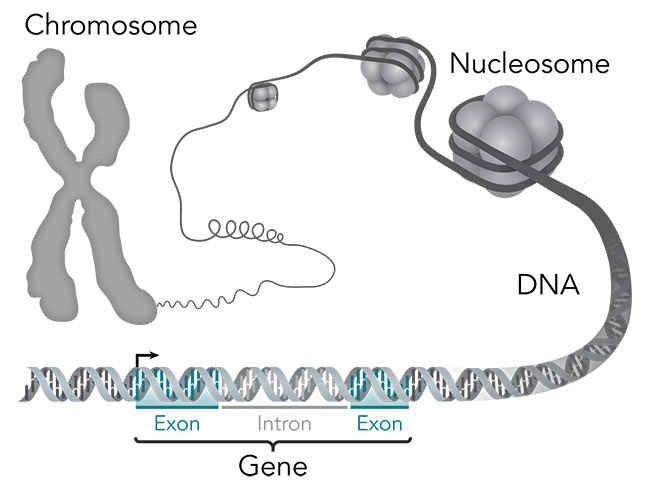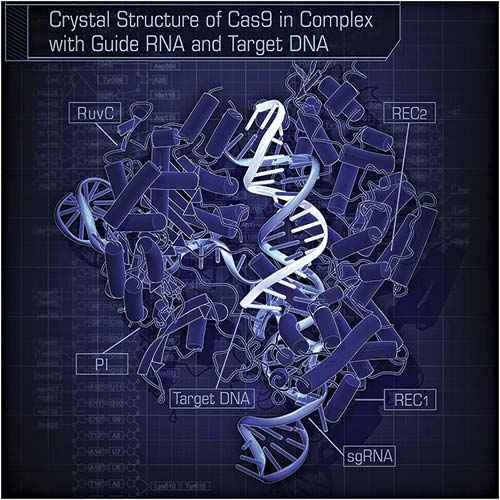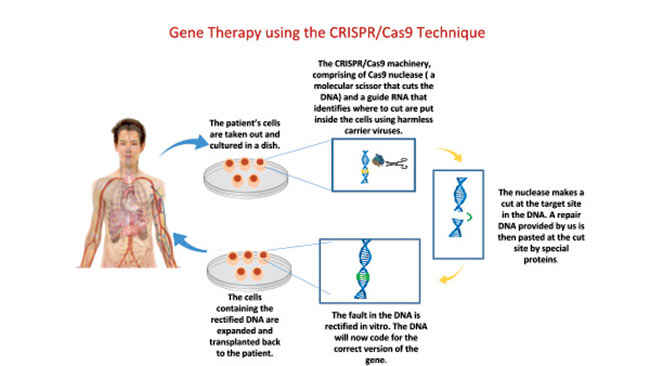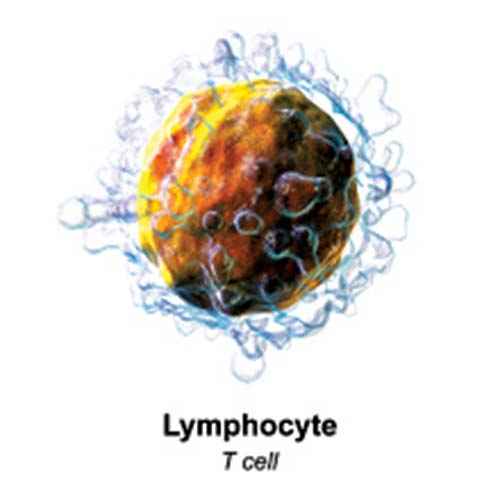Editing our DNA code with CRISPR
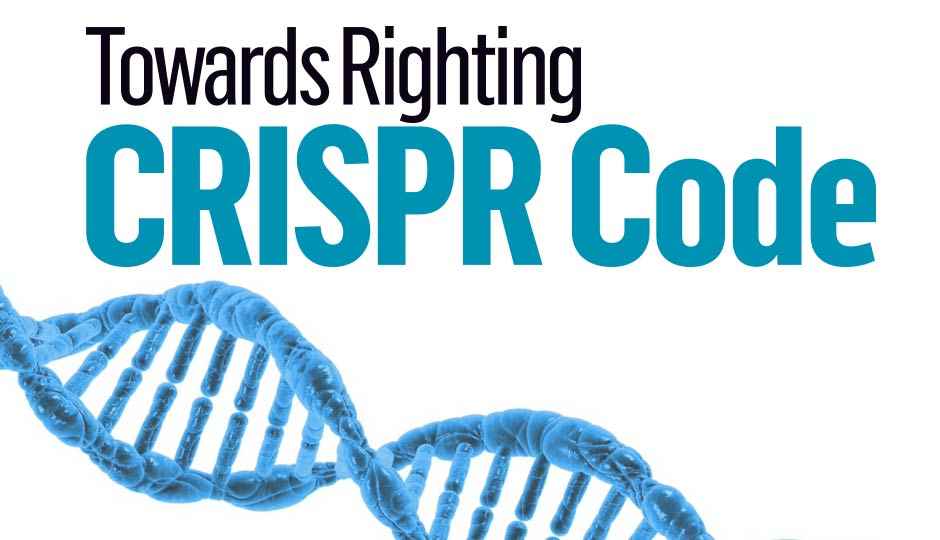
Everything can be improved – from software code to the code that makes us who we are
This decade may be more than halfway done, but it will be remembered for one particular decision by the powers that be, and that’s to allow scientists to conduct human trials of genetic modification using CRISPR. Finally, some of humanity has overcome its superstitions, stopped pretending that it is perfect, and is looking to dabble with the very code that makes us who we are. Obviously we’re talking DNA code, and CRISPR – a new genetic modification tool that’s the reason behind the cutesy headline to this article.
CRISPR (Clustered Regularly Interspersed Short Palindromic Repeats) is promising to edit DNA codes with unprecedented precision and simplicity. Why have we made such a big deal about CRISPR in the intro to this article? Because if it succeeds and scientists are able to experiment and analyse the genetic codes of humans, and then change what they want to, it would mean that we as a race would have a near unlimited power of creation. Imagine God (or if you are an atheist, imagine any supreme being) creating life by mixing and inserting lines of code. This code is complex, intractable and was till date not prone to editing, almost like a read only document. Now imagine if we had the key to break through this code’s editing privileges and make changes. CRISPR might just be that key!
Pre CRISPR days
Genetics is serious business. Even a tiny fault in gene replication can result in serious disorders for an organism, or individual. This happens because a fault in the gene means the wrong proteins are made, or the protein associated with the gene just isn’t made at all!
Patients suffering from such deficiencies cannot get the missing protein injected straight into their bloodstream because that comes with a whole other set of complications. Instead, what gene therapy was doing was delivering a gene into the patient’s cells that would then synthesize the missing protein. Using a process called “homologous recombination”, the newly introduced DNA which was similar (homologous) to the target DNA, replaced it. Cells which have the correct gene would now be able to produce the missing protein on their own making the cure long lasting, if not completely permanent. So why did we even need an advancement?
Schematic of how genes are bundled up in our chromsomes
We needed one because these therapies were still far from perfect. The DNA containing the gene had to be stitched onto the patient’s DNA at the right place. Mistakes happen, and the DNA could get stitched in at the wrong site, because it bore a resemblance to the target site. Plus, when gene integration goes wrong, it could lead to serious complications such as cancer. It’s not just about safety though, because even efficiency is a concern. This is because for some diseases, more than one gene needs to be replaced, which poses a problem for virus mediated gene delivery systems. This is why geneticists have been on a constant lookout for better techniques. CRISPR, machinery borrowed from tiny bacteria, offers a new way forward.
CRISPR: Bacteria’s self defense mechanism
As is usually the case, solutions pop up when no one is looking for one. Believe it or not, CRISPR was discovered by accident because the yogurt industry wanted their good bacteria to be healthier. They wanted bacteria that would be more resistant to viruses that were infecting the bacteria and spoiling the yogurt. While looking at virus resistant bacteria, scientists found the CRISPR mechanism.
CRISPR is something bacteria have been using for ages to fight against viruses. In a region of the bacteria’s DNA, there’s an area called CRISPR. This region has a whole host of Short Palindromic Repeats (short DNA sequences that read the same forwards as well as backwards). The sequences are interspaced at regular intervals, and in clusters, which is why we arrive at the name: Clustered Regularly Interspaced Short Palindromic Repeats (CRISPR). In the spaces between the Short Palindromic Repeats, the bacteria store DNA identities of viruses that have attacked it before. This spacer DNA is actually where all the magic happens.
In addition to the CRISPR section, scientists also discovered CRISPR-associated (Cas) genes (Cas9 for this story), which work with CRISPR to defend the bacteria against infection. These Cas genes have been assigned numbers as a way to identify them. The Cas genes make Cas proteins, which are either nucleases or helicases. Helicases are enzymes that unravel DNA, and nucleases are those that can cut DNA strains.
If the bacteria is infected by a virus DNA that it has already encountered, the Cas genes order up some Cas proteins, the CRISPR chunk identifies the viral DNA and orders the creation of a CRISPR-RNA (which identifies the viral DNA and bonds with it, while the nuclease cuts up the viral DNA). If not for CRISPR, the viral DNA would latch on somewhere, replicate and quickly kill off the cell. Instead, CRISPR neutralises the threat.
But what if it’s a new infection that’s not in CRISPR’s record? Here too CRISPR works, because it creates a Cas protein, which will then tackle the invader, and then break it’s DNA apart.
Geneticists borrowed the nuclease and customised the guide RNA so that it could be used to alter human DNA.
Cartoon showing the guide RNA – Cas9 latching on the target DNA
How it works
For certain diseases, we know how and where the DNA code has gone wrong and we can pinpoint the faulty sequence. To rectify the problem, the editing tool needs to first find that sequence in our DNA. This is like looking for a needle in a stack of needles! Here’s where the guide RNA helps us. In bacteria, the guide RNA, coming from the archival CRISPR region, finds the sequence with ease, however,in our case, because we know the sequence that needs to be edited, we don’t need the archive. Instead, we synthesize the RNA guide ourselves (because we know the sequence) and put it inside human cells along with the Cas9 nuclease. Now instead of recognising foreign DNA (as it did in bacteria), the CRISPR machinery recognises the faulty gene in our cells and cuts it out.
Two things can happen when the guide sequence directs the scissor which then cuts the DNA. Either only a few letters in the DNA sequence can be modified on it’s own or alternately, entire stretches can be replaced with the correct DNA. When the cell’s repair machinery joins the DNA back on its own, the sequence is just slightly altered, which is sufficient in a lot of cases. For example, in the case of faulty genes, single letter changes are known to inactivate them. If, however, at the cut site, a repair DNA sequence is provided, the machinery can paste that into the genome. This is useful when we need to add a new piece of DNA, or replace a faulty one. Therefore, not only can we deliver entire fragments of gene DNA but also edit small portions in the gene with ease. Further, more than one region in the genome can be edited, providing a fix to disorders where a simple edit at one location doesn’t solve the problem. CRISPR is an incredibly flexible technology in that sense and compared to earlier gene therapy techniques it offers a wider range of solutions with greater efficiency. The versatility with which this system can edit genes has caught everybody’s attention. Thanks to its affordability and simplicity, a revolution is underway, with CRISPR being tried by researchers everywhere – in academia and industry.
CRISPR in action
CRISPR has been successfully used to alter genes in bacteria, yeast, fruit fly, mice,monkeys and even human cells in a petri- dish. The technique will enable scientists to directly modify genes, making it easier to explore the genetic basis of diseases, among other things. Recently, another landmark was reached, when researchers modified the gene responsible for B thalassemia in human embryos for the first time. Meanwhile, leading CRISPR scientists ventured into the industry by forming a company, Editas Medicine, which aims to develop this technology further to treat diseases.
Our distant evolutionary cousins, the crab-eating monkeys have been a target of CRISPR technology. By changing some genes in these monkeys, they show autism like symptoms which give researchers a primate model organism for autism. In the future this route can be tried for various diseases that affect humans and because monkeys are genetically more similar to humans than lab rats and guinea pigs, the study would be easier to adapt for case of our species.
These species have been used for autism research enabled by CRISPR
The transforming power of CRISPR is not limited to medicine, with a lot of projects in the pipeline for the use of CRISPR in the farm too. Chinese scientists have modified a wheat strain to make it resistant to fungus, and around the globe CRISPR is being utilised on crops as well as animals to make them better yielding, more resistant to infections and hostile environmental conditions.
This fervent atmosphere created in the research and biomedical industry bodes well for mankind and speaks volumes about the faith the scientific community has on CRISPR technology.
Human Trials and the quest to cure Cancer
The announcement made by NIH, allowing human trials in June this year is a shot in the arm for the scientific and medicine fields. The team at University of Pennsylvania, ironically the place where the death of Jesse Gelsinger halted gene therapy for a long time, is all poised to launch the trial on people suffering from specific forms of cancer. This trial is unique because the CRISPR/Cas9 system enables editing to be done at three different sites in the DNA (Deoxyribonucleic Acid).
How are they planning to establish a cure for Cancer? Special cells in the blood which help fight off infections, called T cells,will be taken from the patient’s body. Through CRISPR/Cas9 they will be engineered in such a way that they can specifically home in on cancer cells. Also, cancer plays another trick on the T cells that reduces the strength of our body’s immune response. The other two modifications in the genome are aimed at disabling the gene responsible for this immune reduction. The engineered cells will then be put back into the patient. Collectively, these modifications hold the promise to cure some forms of cancer. An approval from the U.S Food and Drug Administration is the only hurdle on this path, but the scientists hope to get the green light and start the trial by the end of this year.
A 3D reconstruction of a T-cell lymphocyte
Chinese researchers are also set to start their own CRISPR/Cas9 trial to treat patients with lung cancer. Editas Medicine is not far behind, with a proposal to use the technique to cure a form of blindness.
CRISPR is arguably the most revolutionary technology of our generation. A lot of Nobel Prizes are waiting to be won. The age of designer babies is nigh, and we can only hope for common sense to prevail. Getting carried away with genetics isn’t ideal. Didn’t the Nutty Professor series of movies teach you anything?
With inputs from Ronak Gupta
This article was first published in November 2016 issue of Digit magazine. To read Digit's articles first, subscribe here or download the Digit e-magazine app for Android and iOS. You could also buy Digit's previous issues here.

